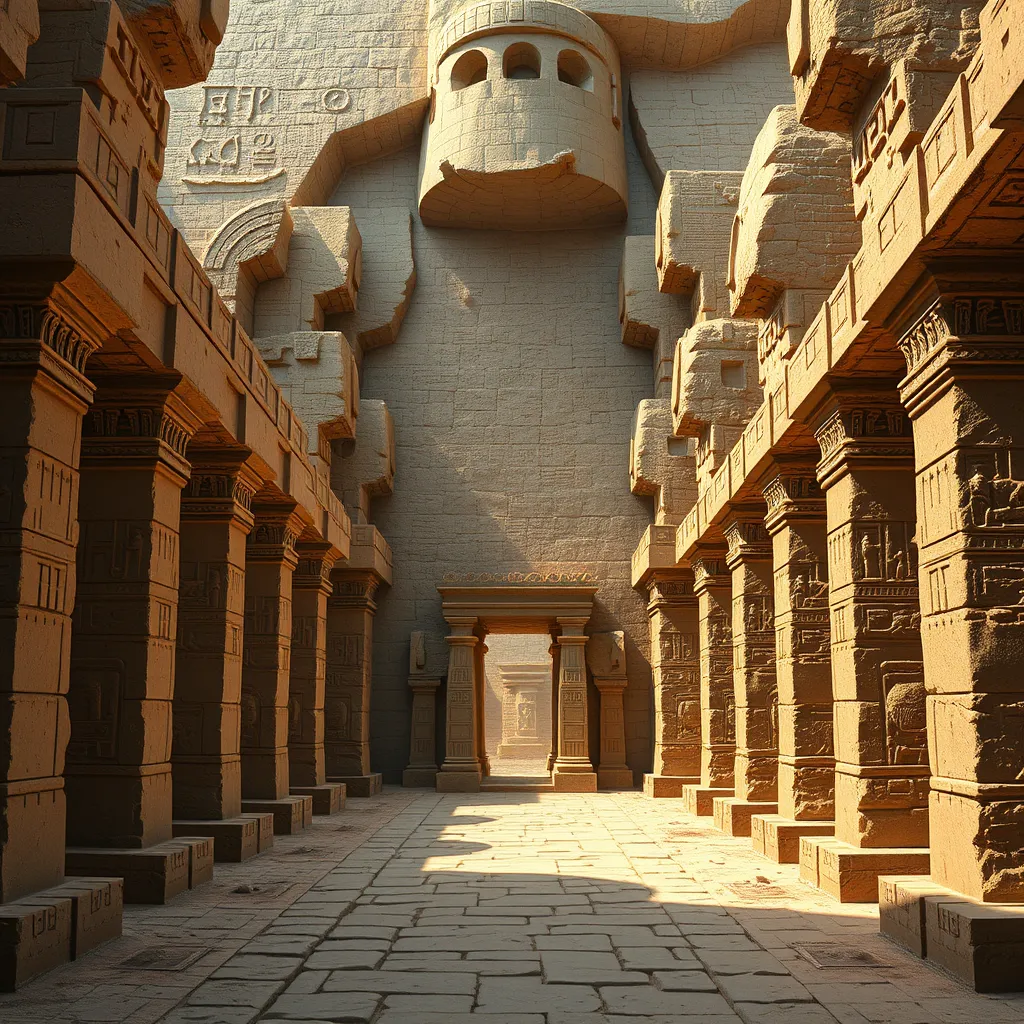The Duat: A Labyrinth of Trials and Triumphs
I. Introduction to the Duat
The Duat, also known as the Egyptian underworld, is a crucial aspect of ancient Egyptian mythology. It represents a mystical realm where souls journey after death, undergoing various trials and challenges. The Duat is not merely a place of punishment or reward; rather, it is a complex landscape of both peril and potential, embodying the Egyptians’ beliefs about the afterlife.
This article will explore the Duat in detail, examining its structure, the trials souls face, the significance of the Book of the Dead, the journey through the Duat, and the triumphs that await those who successfully navigate its challenges.
II. The Structure of the Duat
The Duat is often depicted as a labyrinthine realm filled with various regions, each with its own significance and challenges. Geographically, it is represented as a dark, watery expanse filled with obstacles, reflecting the uncertainty and fear associated with death and the afterlife.
Key regions within the Duat include:
- The Field of Reeds: A paradise where souls who have passed the trials can reside in peace.
- The Lake of Fire: A place of punishment for those deemed unworthy.
- The Hall of Maat: The location where the Weighing of the Heart ceremony takes place.
The labyrinthine design of the Duat symbolizes the complexity of the afterlife journey, reflecting the myriad challenges and pathways that souls must navigate to achieve immortality and favor from the gods.
III. The Trials of the Duat
Souls entering the Duat face numerous trials that test their worthiness and moral character. These challenges are essential for determining their fate in the afterlife. One of the most significant trials is the Weighing of the Heart ceremony, where the heart of the deceased is weighed against the feather of Maat, the goddess of truth and justice.
During this ceremony:
- If the heart is lighter than the feather, the soul is deemed worthy and can proceed to the Field of Reeds.
- If the heart is heavier, it is devoured by Ammit, a fearsome creature that symbolizes unworthiness.
In addition to the Weighing of the Heart, souls encounter various deities and guardians throughout the Duat, including:
- Anubis: The jackal-headed god who guides souls and oversees the weighing process.
- Thoth: The god of wisdom, who records the results of the weighing.
IV. The Role of the Book of the Dead
The Book of the Dead is a vital text for the deceased, serving as a guide through the Duat. This collection of spells, prayers, and incantations was intended to assist souls in navigating the challenges they would face in the afterlife.
Key spells include:
- Spell 125: The most famous spell that describes the Weighing of the Heart.
- Spell for protection: Various spells that offer safeguards against dangers encountered in the Duat.
Illustrations within the Book of the Dead also hold significant meaning, often depicting scenes of the afterlife, the deities involved, and the trials awaiting the deceased. These images served as visual cues, reinforcing the teachings and preparations necessary for a successful journey.
V. The Journey through the Duat
The journey through the Duat is divided into several stages, each representing a step from death to rebirth. These stages include:
- Crossing the Waters: Souls must navigate treacherous waters guarded by various creatures.
- Facing Trials: Encountering challenges that test their heart and soul.
- The Hall of Maat: The climax of the journey where the Weighing of the Heart occurs.
Important landmarks within the Duat, such as the Hall of Maat and the Lake of Fire, carry profound meanings related to judgment and redemption. Rituals and offerings play a crucial role in ensuring safe passage, as families would often provide food, drink, and goods for the deceased to use in the afterlife.
VI. Triumphs in the Duat
Those who successfully navigate the Duat’s trials can achieve significant triumphs, including:
- Immortality: The ultimate goal for many Egyptians was to live forever in the afterlife.
- Union with the Divine: A successful soul could join the gods, particularly Osiris, in eternal peace.
- Resurrection: The belief that one could be reborn, continuing the cycle of life in a new form.
Notable figures from Egyptian history, such as Osiris and various pharaohs, are often depicted as successfully navigating the Duat, serving as examples of triumph over death and adversity.
VII. The Duat’s Influence on Modern Culture
The legacy of the Duat continues to influence modern culture in various ways:
- Literature: The Duat has inspired numerous works, from ancient texts to contemporary novels exploring themes of death and the afterlife.
- Film and Art: Modern depictions of the Duat often dramatize the journey of souls, serving as a reflection of humanity’s fascination with the afterlife.
- Spiritual Practices: Some contemporary spiritual practices draw on ancient Egyptian beliefs about the afterlife, emphasizing the importance of spiritual journeys.
Connections to modern concepts of the afterlife also arise, as many cultures grapple with the themes of judgment, redemption, and the afterlife’s mysteries.
VIII. Conclusion
In conclusion, the Duat stands as a realm of both trials and triumphs in ancient Egyptian belief systems. It represents the intricate journey that souls must undertake to achieve immortality and favor from the divine. The enduring legacy of the Duat reflects humanity’s ongoing quest for understanding life, death, and what lies beyond. By exploring the Duat, we gain valuable insights into the spiritual beliefs of ancient Egyptians and their profound impact on contemporary thought.




